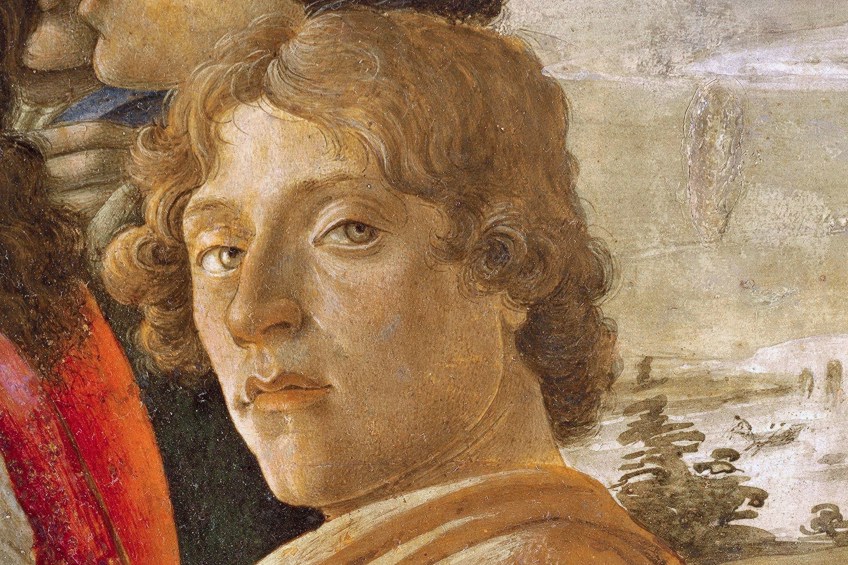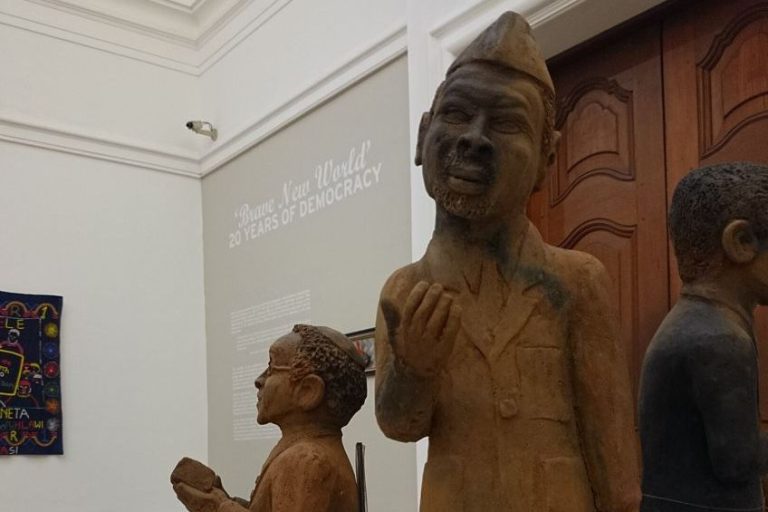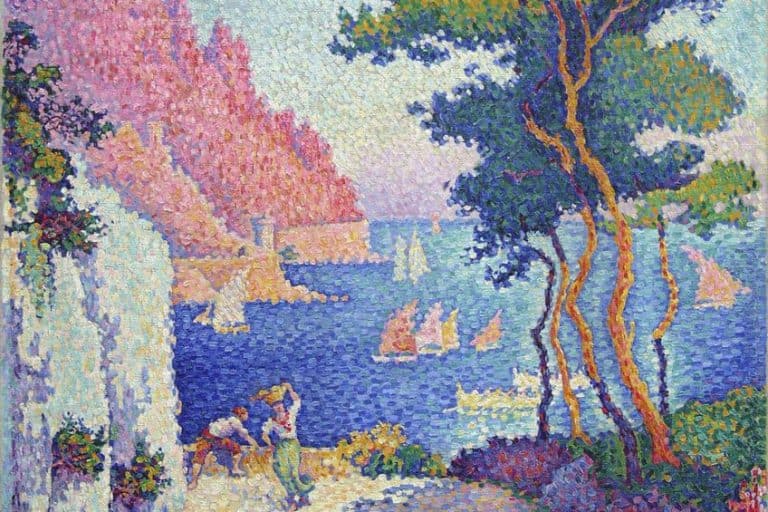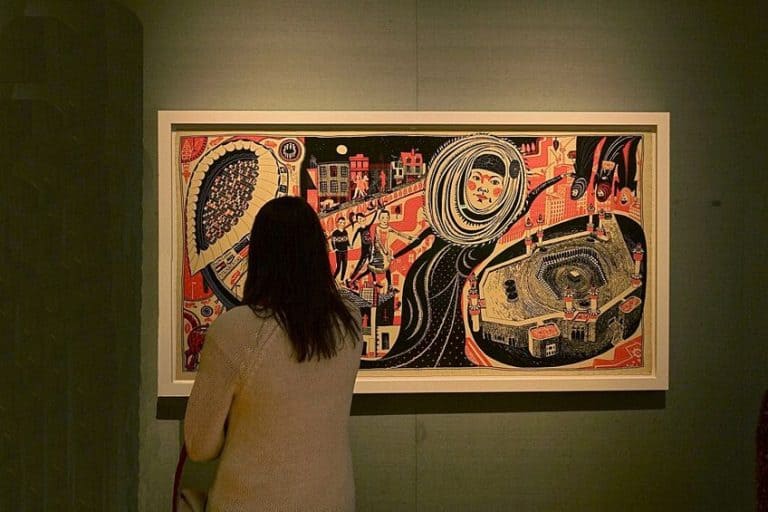Sandro Botticelli – The Life and Works of This Famous Florence Artist
Florence artist Sandro Botticelli was arguably the best Humanist artist of the Early Renaissance Era, despite the fact that much of his history and inspirations are still obscure to us even in the present. Botticelli the artist’s artworks represent the pinnacle of the Medicis’ cultural flourishing in Florence, an opulent culture that promoted the progress of the arts, philosophy, and ideology. Throughout his long career, Sandro Botticelli the painter was contracted to paint a range of subjects, but at the heart of his paintings, he always sought grace and morality, attributes personified by the deity Venus, who is the center of many of his most celebrated paintings.
Sandro Botticelli’s Biography
Who was Botticelli? Florence artist Sandro Botticelli, the son of a hide tanner, was a bright student who was easily sidetracked in class. When he was a youngster, he was well-known among his classmates for his keen sense of humor and fondness for puns, and he rapidly established a name as a restless, agitated, and irritable young boy.
Fortunately, his early talent was recognized, and he was withdrawn from school and placed on an apprenticeship.

Between 1478 and 1490, Sandro Botticelli the artist was at his most innovative. As evidenced by the harmony of his arrangements and the flowing curves of his figures, he successfully mixed decorative line work with classical forms in these pieces. The 1490s were a turbulent period in which the Medici family were driven from Florence and Italy’s peace was disrupted by invasions and plagues. Sandro Botticelli the painter discarded his early works’ ornamental charm in favor of a more direct style that seemed crass and heavy-handed in contrast.
These latter works, which have significant ethical and theological ramifications, have also been compared to the sophisticated aesthetics of artists such as Raphael and Michelangelo.
| Artist Name | Sandro Botticelli |
| Date of Birth | c. 1445 |
| Date of Death | 17 May 1510 |
| Nationality | Italian |
| Medium | Painting |
| Associated Movements, Themes, and Styles | Early Renaissance, religious painting |
Childhood
Sandro Botticelli was born in Florence in a house on the now-named Borgo Ognissanti Street. He spent his entire lifetime in the very same suburb and his burial occurred at his local church, Ognissanti. His birth date is unknown, although his father’s tax records in subsequent years show him as two in 1447. Botticelli’s father stopped working as a tanner in 1460 and began working as a gold-beater alongside his other child, Antonio.
This occupation would have put the family in contact with a variety of artists.
Botticelli began his career as a goldsmith. The neighborhood was humble, populated by spinners and other laborers, but there were a few affluent households, most prominently the Rucellai, an opulent dynasty of financiers and wool traders.
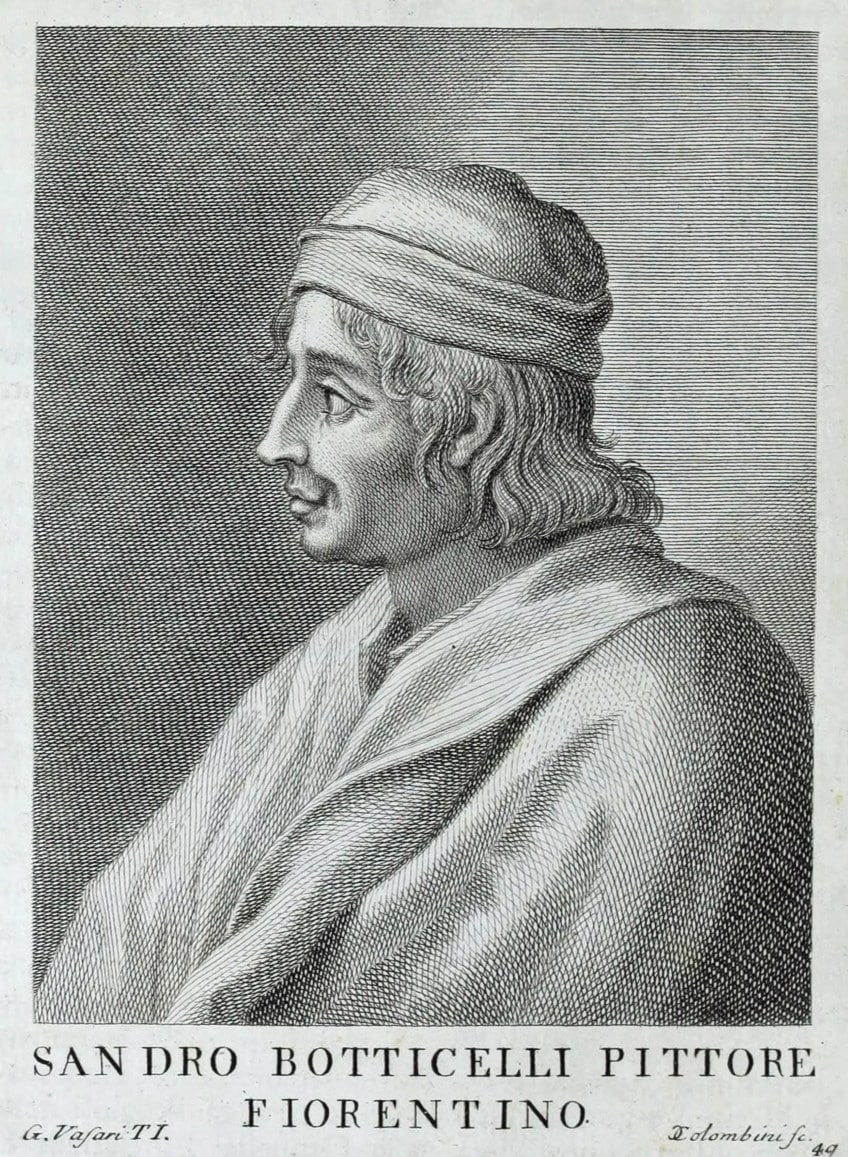
Between 1446 and 1451, the family’s patriarch, Giovanni di Paolo Rucellai, hired Leon Battista Alberti to build the famed Palazzo Rucellai, a monument in Italian Renaissance architecture. By 1458, Sandro Botticelli’s household was leasing their property from the Rucellai, only one of the numerous transactions between the two families.
His father purchased a villa in the neighboring Via Nuova in 1464, where Botticelli the artist resided from around 1470 until his demise in 1510.
Despite the presence of his siblings Simone and Giovanni, Botticelli lived and produced in the home. The Vespucci’s were the Botticelli’s most prominent neighbors, notably Amerigo Vespucci, the person after whom the land of America was titled. The Vespucci family were ardent Medici supporters who became regular Botticelli benefactors.
Early Training and Work
Botticelli joined Fra Filippo Lippi’s studio around the close of the 1450s. Lippi is well-known for his simplistic and charming works, particularly of Madonna and Child. His use of the feminine form and purity of line had a great effect on Botticelli’s style, notably in early works such as Madonna of the Eucharist (c. 1470).

The connection is visible in Lippi’s paintings at Prato Cathedral, close to Florence. Despite the lack of verifiable proof, Lippi’s substantial aesthetic impact shows that Botticelli was a student in his workshop. It was typical at that period for apprenticeships to start at the age of 13 or younger, therefore Botticelli most probably started his artistic study at a young age. Lippi benefited from the sponsorship of the strong Medici family, and Botticelli quickly followed suit. In 1464, the family moved around the block to the Via Nuova, whereupon they encountered the wealthy Vespucci family.
A tale started spreading in the 19th century that Florence artist Botticelli used Amerigo’s gorgeous cousin-in-law, Simonetta, as a sitter for several of his famed artworks; nevertheless, while this makes for an intriguing story, the truth is that Simonetta had already been dead for a while by the time Sandro Botticelli the painter began producing them.
Botticelli’s Fortitude (1470) is the first recorded painting from a panel of seven works of the virtues, the rest of the panels were produced by Antonio del Pollaiuolo’s studio, which was initially contracted for the task. Pollaiuolo’s realistic depictions of the human body and grasp of physiology, which Pollaiuolo allegedly researched from dismembered corpses, impacted Botticelli the artist. Botticelli, on the other hand, avoided genuine realism, choosing a twisted figure if it fitted the broader theme better.

Botticelli’s early Madonnas show the genuine warmth and sensitivity that would come to characterize his works throughout his lifetime. Sandro Botticelli the painter is also supposed to have been involved at Andrea del Verrocchio’s studio in the late 1460s, who is more renowned today for his sculptures than his paintings, and the impact is visible in the sculptural shapes of Botticelli’s characters. By 1470, Sandro Botticelli had relocated to his family’s home on Via Nuova and started his workshop.
Botticelli’s particular style made it easier for his studio to reproduce or complete works that he began, therefore there are numerous paintings in which it is difficult to distinguish Botticelli the artist’s unique hand from those of his pupils.
Mature Period
In 1472, Botticelli’s standing allowed him to join the Compagnia di San Luca, a society of Florentine painters. During this time period, his initial work was done for churches in Florence, most notably his Adoration of the Magi (c. 1476) for Santa Maria Novella, one of the city’s most important ecclesiastical buildings. Portraits of Cosimo de Medici, his sons Giovanni and Piero, and other figures of the Medici family may be found in the picture.

In addition to this, the artwork is considered to contain the only example of Botticelli’s self-portrait. Along with his more important pieces, his studio was the most prevalent provider of Madonnas to personal and community clientele in Florence throughout this era, and Botticelli the artist soon became so famous that Pope Sixtus IV requested that Botticelli supervise the adornment of the recently finished Sistine Chapel in the Vatican in 1481. Botticelli produced a sequence of murals for this undertaking, which are sometimes disregarded by tourists whose focus is led immediately to Michelangelo’s famed ceiling.
“Having thus obtained even increased notoriety and prestige among the great multitude of rivals who collaborated with him,” Vasari wrote, “he obtained from the Pope a large amount of money, the entirety of which he devoured and wasted in a singular instant during his stay in Rome, where he resided in a disorganized manner, as was his desire.”
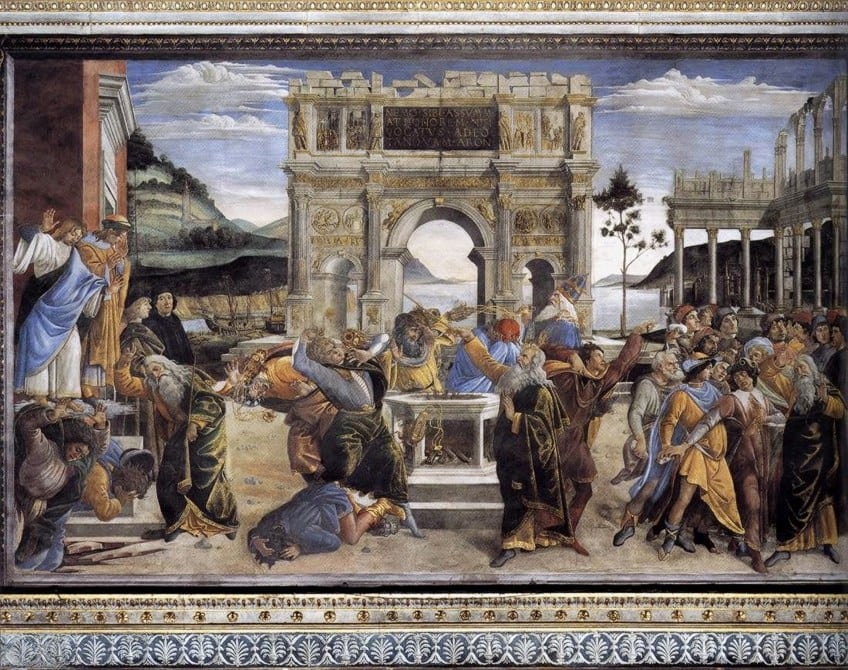
Botticelli was at the vanguard of a huge transition in Western Europe as the dark ages ended and Humanism and the logical disciplines were just starting to build a completely new view of the world, which would ultimately blossom into the Enlightenment a few hundreds of years later.
Shortly after arriving in Florence, Botticelli the artist began work on his two most famous paintings, La Primavera (c. 1480) and The Birth of Venus (1485-1486). Vasari observed these works at Pierfrancesco de’ Medici’s home, and it was long considered that they were meant for this location, but scholars are now unsure about the works’ provenance and commissions. Both paintings appear to have been ordered by a representative of the Medici family, but this is not definite.

Florence under the Medici was an affluent and permissive society where culture flourished. Cosimo de’ Medici established an academy and invited intellectuals from all across Europe to discuss Renaissance Humanism and Neoplatonic philosophy in Florence. Sandro Botticelli might have been affiliated with the academy, although not being a member, based on the classical topics of his paintings during this time period.
Venus, who appears in several of Botticelli’s most renowned paintings of the time, was a prominent player for the Neoplatonists, embodying “Humanitas” – the growth of human virtues in all of its manifestations.
A transformation was taking place in science, society, and thought, and Botticelli’s works helped to shape this new perspective, announcing the arrival of the modern world. The conflicts between the Medieval and the contemporary can be seen in these works of art, with the aforementioned being religious, with paintings that were primarily doctrinal, ornamental, and intricate, whereas the latter is logical, systematic, and glamorizing traditional art that emerged from whatever the Neoplatonists presumed to be a more socially enlightened civilization.
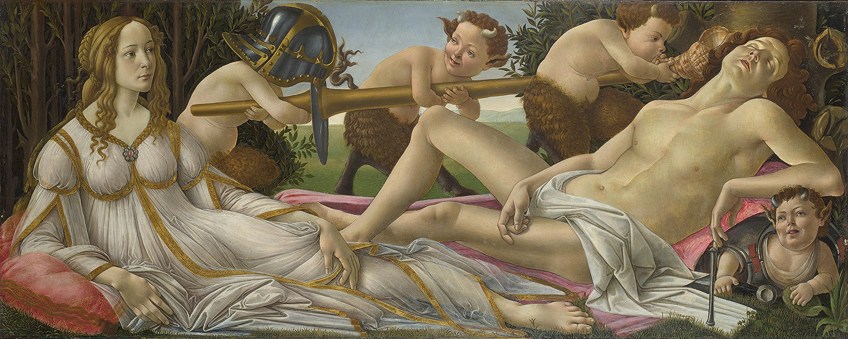
Botticelli collaborated with a number of other important Florentine Renaissance painters. He did not get on well with everybody, however. Leonardo da Vinci said in his Book on Painting that Florence artist Botticelli once stated that he disliked landscape art since “by tossing a sponge wet in different colors against a wall, one might construct an area in which a magnificent scene can be viewed.”
In his journal, da Vinci answered furiously, “Although that stain may offer ideas, it will not enable you to finish any painting, since the above-mentioned Sandro Botticelli the painter produces extremely awful landscapes.”
Late Period
Botticelli and his sibling Simone rented a tiny country home on the outskirts of Florence in the 1490s. The artist appears to have lived a bachelor’s life, as he had never married. In Angelo Poliziano’s Detti Piacevoli (1477), he tells the story of a conversation between Sandro Botticelli and his supporter Tommaso Soderini. When Soderini asks Botticelli why he isn’t married, he answers that he had lately dreamed he had a wife, awoke with a strong sensation of loss, and then wandered around the city to keep himself from going back to sleep again and continuing the dream.
In the Florentine Archives from 1502, there is a charge against Botticelli that he “possessed a boy,” which has led to speculation that he was gay. Art historians disagree on how much should indeed be read into this, given that allegations of these kinds were a typical type of trivial defamation in the era. Several scholars have also noticed homo-erotic overtones in artworks such as St Sebastian (c. 1474).

Shortly after the passing of Lorenzo de Medici and the occupation of Charles VIII of France in the 1490s, the political atmosphere in Florence shifted dramatically. As the Medici family’s control waned, a Dominican monk called Girolamo Savonarola, who preached catastrophic sermons criticizing Florentine cultural values, came to wield substantial sway in the city. Savonarola’s radical beliefs were also more widely embraced in Florence at that age, as the region was still suffering from the devastating Bubonic plague outbreak.
Many residents believed that this sad event was God’s judgment for their materialistic lives.
This religious fervor culminated in The Burning of the Vanities on Shrove Tuesday (1497), which is said to have resulted in the loss of many of Botticelli’s canvases, with his sole remaining pieces being those already in the property of the Medici. The artworks of the 1500s are darker and more obviously spiritual in the topic, yet they are nevertheless distinguished by Botticelli the painter’s warmth and inventive brilliance.
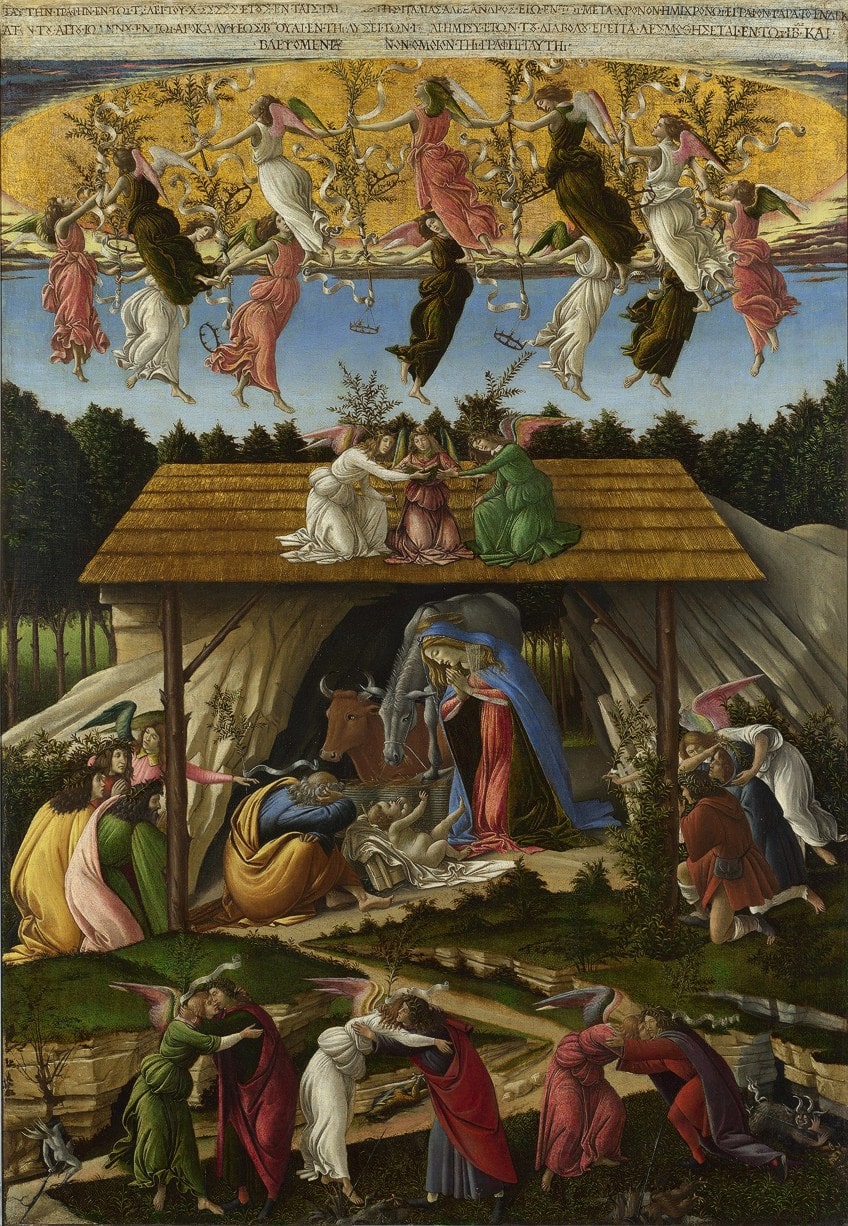
Paintings like Mystic Nativity (c. 1500-1501) have a raw emotion that demonstrates thorough comprehension of the horror of the human experience; they also demonstrate a good amount of attention paid to the environments, whether it is in-depth fictitious design or a rustic field. Scholars disagree on what happened to Sandro Botticelli the painter during this time period, with some claiming that the more explicitly religious topics of his later paintings were more proof that he, too, became a devotee of Savonarola.
Some speculate that he was out of employment at the end of his life when more scholarly, humanist artists such as Leonardo da Vinci gained popularity. Vasari claims that Botticelli was a slacker who wasted the money he earned previously in his career. Whatever the cause, he appears to have died in poverty.
The Art Style and Legacy of Sandro Botticelli
Florence artist Sandro Botticelli was among the first Western artists since ancient times to show non-religious topics, inspired by the renaissance of Greek and Roman ideals in Florence at the period. The belief that art might be admired for its own purpose rather than just for religious purposes was a breakthrough point in Western art. Sandro Botticelli the painter served as a bridge between the chasm between the Medieval Gothic painting style and the nascent Humanist Realism.

Art Style
Botticelli’s artwork reflected a growing awareness of anatomy and perspective but retained a decorative aspect not present in the art of the following High Renaissance artists, or for a long period of time afterward. In his paintings, he strived for beauty, and he disregarded reality if a more imaginative shape complemented the larger aesthetic concept better.
During a time when religious art was largely iconographic, his finding of emotional depth in traditional Christian subjects was remarkable.
He presented his themes in a way that made them relatable to the common person, emphasizing their human connections. This is notably evident in his early Madonna and Child pieces, where there is a warmth and compassion that is distinctive of Botticelli linking mother and child. His influence on the course of art history and pop culture has been unequaled throughout the ages.
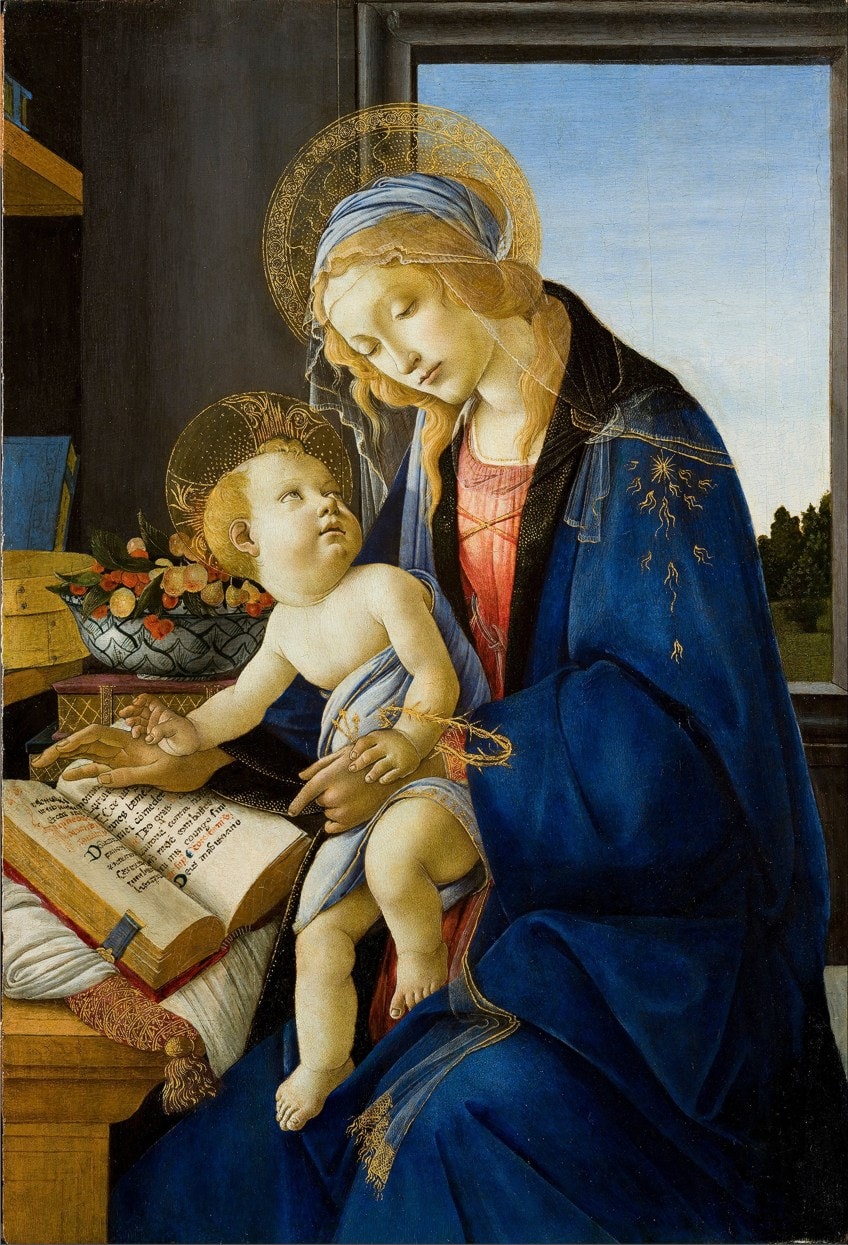
His impact starts with the painters he personally educated, such as Filippino Lippi, who mentored Botticelli when he was young. Botticelli completed Filippino Lippi’s fresco The Adoration of the Kings (1470-1475) in an unusual move (it was more common for a learner to complete his tutor’s paintings, not the other way around).
Botticelli, according to Giorgio Vasari, was the embodiment of the “golden era” of art accomplished under the reign of the renowned benefactor of the arts, Lorenzo de Medici.
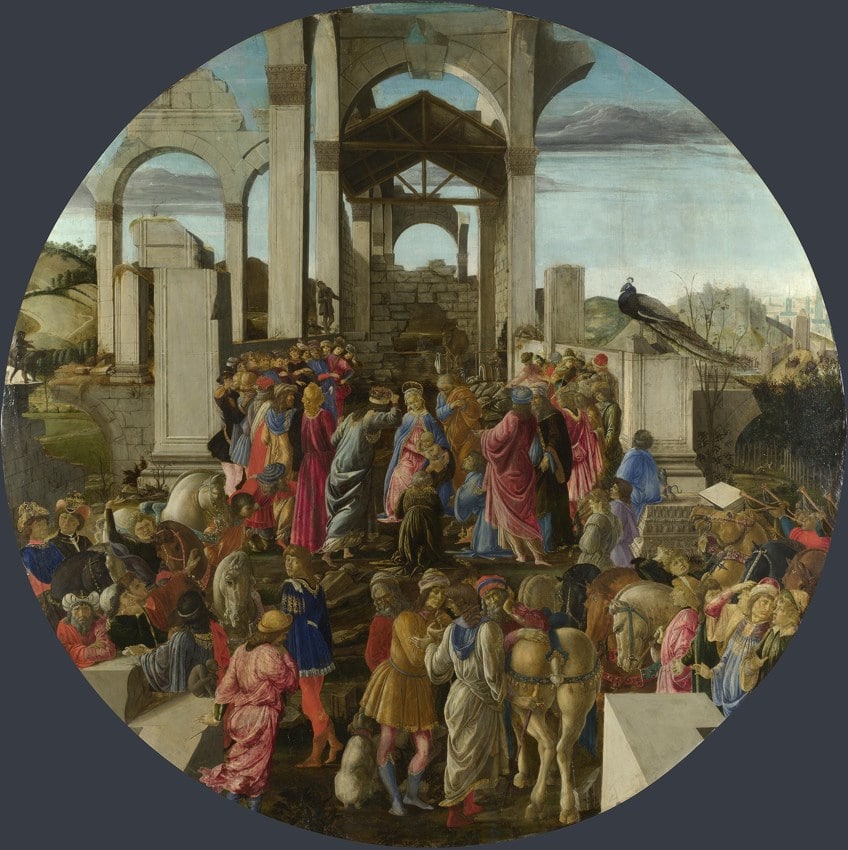
Despite his fame throughout his lifetime, Sandro Botticelli’s legacy deteriorated for decades after his death. Perhaps it’s because Botticelli’s artwork was founded in a Medieval heritage that had been abandoned during the High Renaissance, his artwork was disregarded with Gothic art. It was so-called because it was assumed to be inspired by the uncultivated Goths of the time.
Another hypothesis holds that Botticelli’s reputation faltered after the Medicis were forced to flee Florence, and authority was briefly controlled by conservative Christian elements who condemned the decadence of the prior rulers and the artists they patronized.
Legacy
It wasn’t until the 19th century that his works were appreciated and revalued. The Pre-Raphaelites opposed the softer form of art advocated by Raphael and succeeding painters, favoring the uniformity of early Renaissance art and appreciating Botticelli particularly. Dante Gabriel Rossetti even held a piece by the painter and devoted a sonnet to Botticelli’s La Primavera (c. 1480), assuming the central figure to be the same woman represented in the picture he possessed. Botticelli’s impact spanned several creative groups, beginning with the Pre-Raphaelites.

As per a significant retrospective at the Victoria & Albert Museum in London, the creator’s impact may be traced in artworks by Cindy Sherman and Furthermore, allusions to Botticelli, most particularly The Birth of Venus (c.1496), may be seen in popular culture, including when Ursula Andress emerges from the ocean in the movie Dr. No (1962).
Botticelli’s fame was overshadowed longer and more totally after his passing than just about any other prominent European painter.
His works stayed in the chapels and homes for which they were designed, and his frescoes in the Sistine Chapel were overshadowed by Michelangelo’s. In documents from years after his demise, there are a few allusions to paintings and their location. Vasari’s Life is rather brief and disapproving, notably in the initial edition of 1550. “He is plainly ill at ease with Sandro and did not know how to incorporate him into his evolutionary framework of the art history stretching from Cimabue through Michelangelo,” the Ettlingers write.
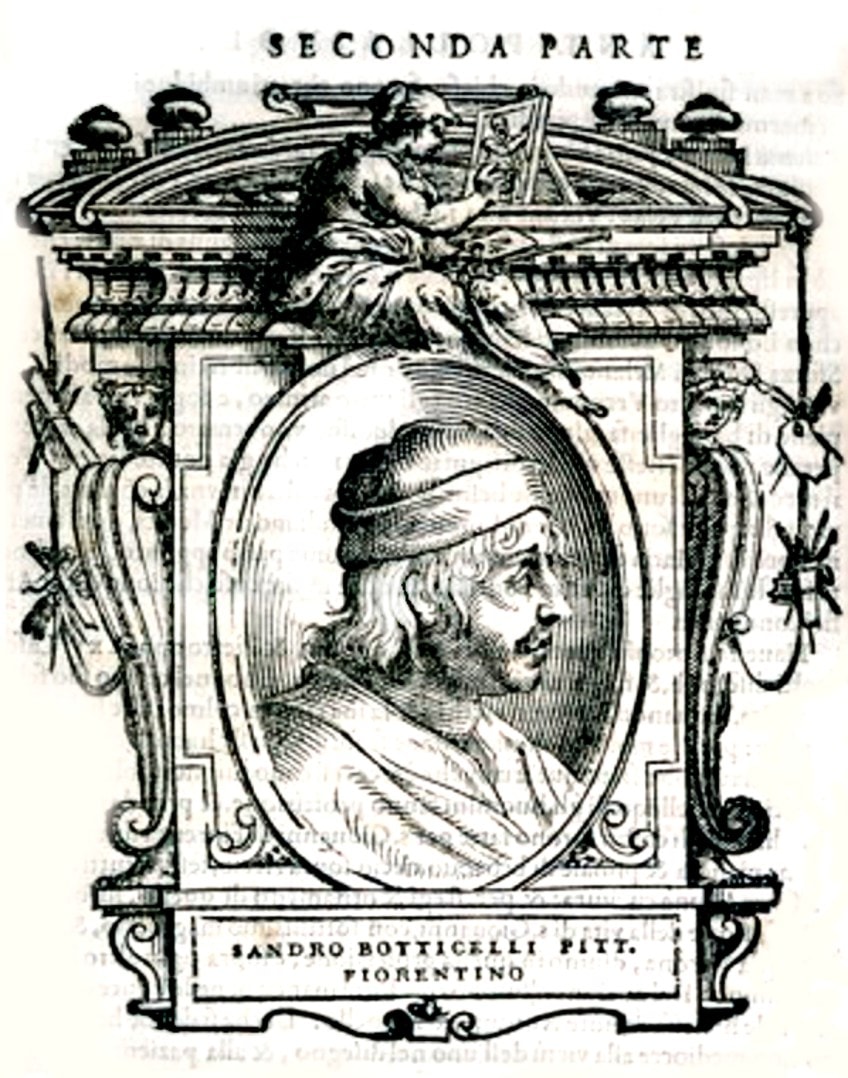
Nevertheless, even if Vasari repeatedly confuses him with Francesco Botticini, yet another prominent Florence artist, this is the primary source of information regarding his life. Vasari considered Botticelli as a staunch supporter of the anti-Medici group inspired by Savonarola, whilst Vasari personally relied greatly on the support of the resurrected Medicis of his day.
Vasari also considered him as a painter who had forsaken his gift in his final years, which insulted his lofty notion of the creative vocation. He spends a significant portion of his essay on quite disturbing stories of Botticelli’s practical tricks.
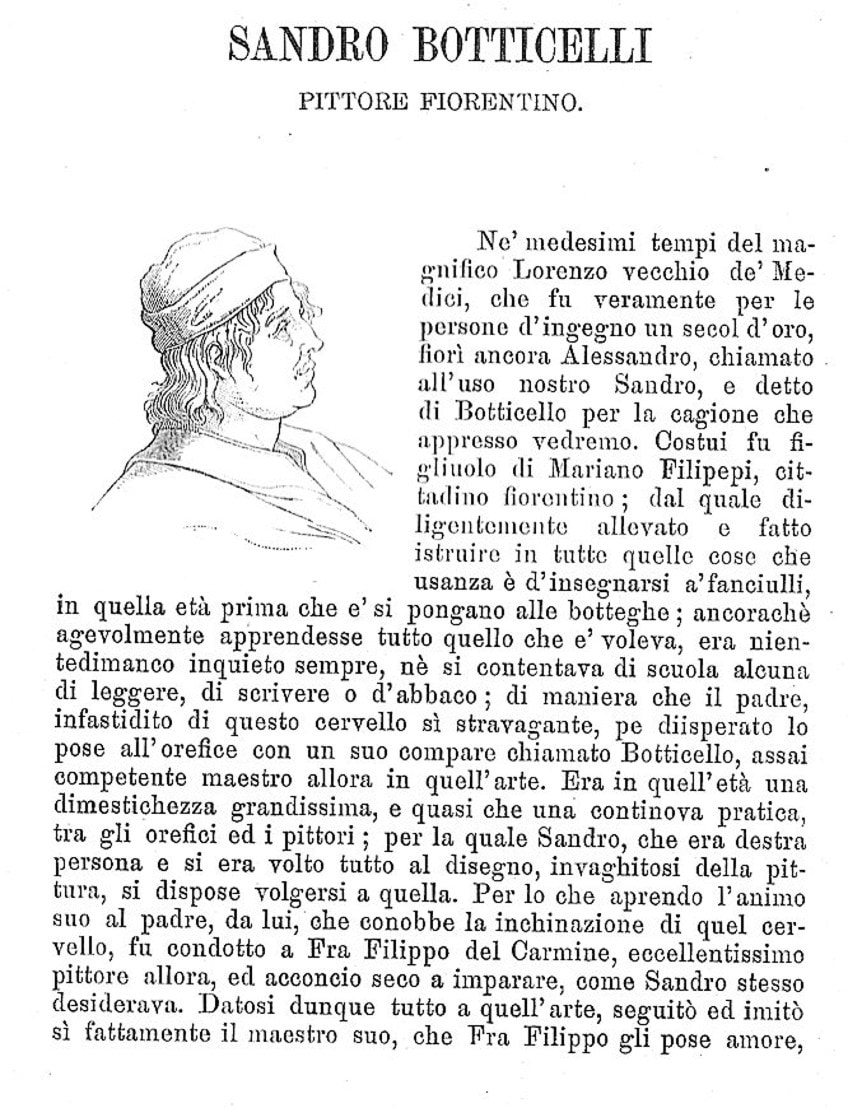
Vasari was born a year after Botticelli died, even though he would have encountered many Florentines who remembered him. In 1621, a picture-buying agent for Ferdinando Gonzaga, Duke of Mantua, purchased a painting purported to be by Botticelli for historical value “as from the touch of a painter by whom Your Highness possesses nothing, and who’s the instructor of Leonardo da Vinci.”
That error is possibly reasonable, because, while being just six years younger than Sandro Botticelli, Leonardo’s style may have appeared to a Baroque assessor to be a generation more developed.
The Mystical Nativity (1501) by Botticelli was bought in Italy by English patron William Young Ottley, who transported it to London in 1799. Following Ottley’s death, its new owner, William Fuller Maitland of Stansted, permitted it to be displayed at a large art show hosted in Manchester in 1857, the Art Treasures Show, where it was seen by almost a million people among many other pieces of art. Venus and Mars (1483) is his only major painting with a mythical theme that has ever been sold on the open market.
Botticelli’s Portraits
Botticelli did paint portraits, but not quite that many have been credited to him. There are some idealized portrait-like artworks of ladies that most likely do not reflect a specific individual (several of which share a close likeness with Venus). Traditional lore connects them to the legendary beautiful Simonetta Vespucci, who died in 1476 at the age of 21, although this is doubtful.
These figurines serve as a secular counterpart to his Madonnas.
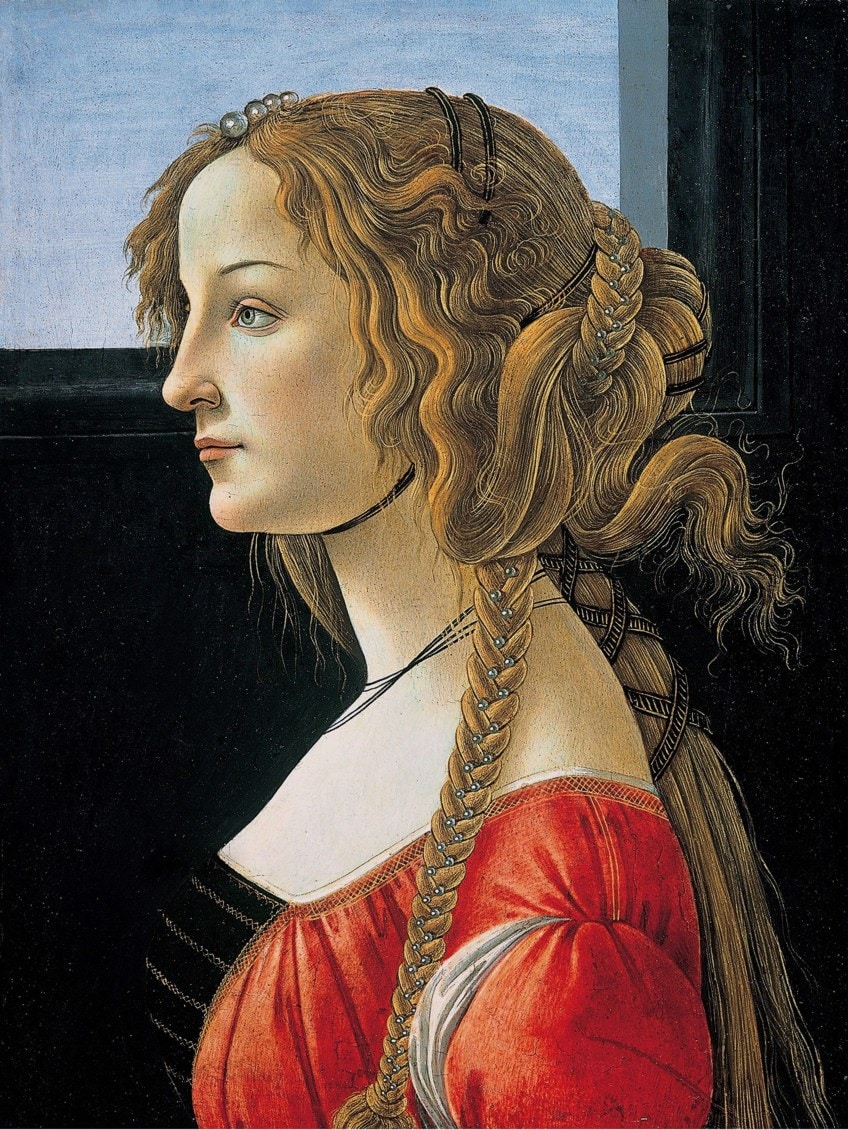
Workshop of Sandro Botticelli, Public domain, via Wikimedia Commons
Sandro Botticelli’s smaller independent portraits, with a few exceptions, display the sitter no lower down the body than the base of the rib cage. Women are typically shown in profile, fully or slightly rotated, but men are typically depicted in a “three-quarters” stance, but never totally frontally. The lighting is employed to create a distinction between both the sides of the face even when the head is pointing more or less level. Backgrounds might be basic or represent an open window with nothing but the sky viewable through it. Some have created landscape backdrops.
These elements were characteristic of Florentine portraiture during the start of his career but had become out of date by his last years.
Many portraits survive in many variants, most likely created by the workshop; their provenance is frequently ambiguous. The background frequently varies between iterations, although the image stays the same. His male pictures have also frequently retained questionable identifications, most frequently of several Medicis, for more than the actual evidence warrants. Lightbown credits him with just around eight pictures of persons, all of which date before 1475. Botticelli frequently exaggerates portions of the characteristics to create resemblance.

He also used portraits in his other works, such as Botticelli’s self-portrait and the Medici in his early Adoration of the Magi. Several characters in the Sistine Chapel frescoes appear to be portraiture, but the subjects are unknown, despite speculative assumptions. Huge iconographic murals from a mansion portray persons of the Tornabuoni family along with divine beings and representations.
While not all of them are known to have survived, portrayals of a youngster with the Seven Liberal Arts and a stunning girl with Venus and the Three Graces are available to view at the Louvre.

Famous Artworks
Florence artist Sandro Botticelli, painter, and draftsman, was one of Italy’s most celebrated painters of the time. His beautiful Madonna and child paintings, altarpieces, and life-size mythological works, such as Venus and Mars, were hugely famous during his lifetime. Here are a few select examples of his artworks.
- Madonna and Child (1467)
- Fortitude (1470)
- Virgin and Child with an Angel (c. 1470)
- Adoration of the Magi (1476)
- Madonna of the Book (1480)
- La Primavera (c. 1480)
- Portrait of a Young Man (c. 1483)
- Venus and Mars (1483)
- The Birth of Venus (1485-1486)
- Mystic Crucifixion (1497)
- Mystic Nativity (c. 1500-1501)

Recommended Reading
During the Early Renaissance, Florence artist Sandro Botticelli was a painter. Less than a century later, under the sponsorship of Lorenzo de Medici, Giorgio Vasari classified this movement as a “golden period,” a sentiment he stated at the beginning of his Vita of Botticelli. His posthumous popularity languished until the 19th century; since then, his artwork has been deemed to embody the linear beauty of Early Renaissance art, and The Birth of Venus and Primavera are now among the most well-known Florentine masterpieces.
Perhaps you would like to learn even more about Sandro Botticelli’s biography. Below, you can find a list of suitable reading material.
Botticelli (2015) by Frank Zollner
This new version of this commemoration of the Renaissance genius’s life and artistry includes all of Sandro Botticelli’s works as well as a detailed and up-to-date analysis of his oeuvre. Botticelli is among the most acclaimed Renaissance artists, and his sensuous Venus and beautiful Primavera are some of the most well-known works of art in the world. This collection raisonné of Botticelli’s art pieces features over 200 full-color examples and thorough scholarship by renowned Renaissance art historian Frank Zöllner, who was characterized by The Financial Times as “a fantastic, accessible teacher; his publication has lush replicas and exquisite depth” in a preceding edition of this book.
- Presents Botticelli’s complete paintings and a study of his work
- A sumptuously illustrated volume with over 200 works
Botticelli (2017) by Barbara Deimling
Sandro Botticelli was well-positioned for recognition, with funding from the strong Medici family, a repertoire of commercial and sacred work, and additions to the famed Sistine Chapel. However, for over 400 years after his death, his work remained overshadowed. The painter did not achieve a substantial art-historical reputation until the 19th century. Botticelli is now regarded as a pivotal figure in the Florentine Early Renaissance. His secular masterpieces which are widely regarded as allegories of Spring are one of the most well-known paintings in the world, with exquisite details, smooth lines, and compositional harmony. His compositions are flowing but balanced, and his figures are both calm and erotic.
Sandro Botticelli, a Florentine artist, was perhaps the best humanist artist of the Early Renaissance, despite the fact that much of his background and influences are still unknown to us today. Botticelli’s artworks symbolize the peak of the Medici’s intellectual affluence in Florence, an affluent society that fostered the advancement of painting, philosophy, and ideology. Sandro Botticelli was hired to create a broad range of topics over the course of his lengthy career, but at the core of his work, he always aspired for elegance and morality, traits represented by the deity, the focus of several of his most renowned canvases.
Take a look at our Botticelli webstory here!
Frequently Asked Questions
Who Was Botticelli?
Botticelli, the son of a hide tanner from Florence, was a brilliant student who was frequently distracted in class. He rapidly gained a reputation as a hyperactive, restless, and grumpy youngster due to his acute sense of humor and propensity for puns. His early skill was recognized, and he was taken out of school and placed in an apprenticeship. The artist Sandro Botticelli was at his most inventive between 1478 and 1490.
What Was Botticelli Famous For?
His work reflects a growing grasp of anatomy and perspective, yet retaining a decorative quality not present in the work of the following High Renaissance artists, or for a long time afterward. He aspired to achieve the level of beauty in his work, abandoning reality when a more whimsical form better suited the greater aesthetic concept. His finding of emotional depth in traditional Christian subjects was extraordinary during a period when religious artwork was primarily iconographic. Botticelli’s Fortitude was his first painting.
Isabella studied at the University of Cape Town in South Africa and graduated with a Bachelor of Arts majoring in English Literature & Language and Psychology. Throughout her undergraduate years, she took Art History as an additional subject and absolutely loved it. Building on from her art history knowledge that began in high school, art has always been a particular area of fascination for her. From learning about artworks previously unknown to her, or sharpening her existing understanding of specific works, the ability to continue learning within this interesting sphere excites her greatly.
Her focal points of interest in art history encompass profiling specific artists and art movements, as it is these areas where she is able to really dig deep into the rich narrative of the art world. Additionally, she particularly enjoys exploring the different artistic styles of the 20th century, as well as the important impact that female artists have had on the development of art history.
Learn more about Isabella Meyer and the Art in Context Team.
Cite this Article
Isabella, Meyer, “Sandro Botticelli – The Life and Works of This Famous Florence Artist.” Art in Context. February 25, 2022. URL: https://artincontext.org/sandro-botticelli/
Meyer, I. (2022, 25 February). Sandro Botticelli – The Life and Works of This Famous Florence Artist. Art in Context. https://artincontext.org/sandro-botticelli/
Meyer, Isabella. “Sandro Botticelli – The Life and Works of This Famous Florence Artist.” Art in Context, February 25, 2022. https://artincontext.org/sandro-botticelli/.


